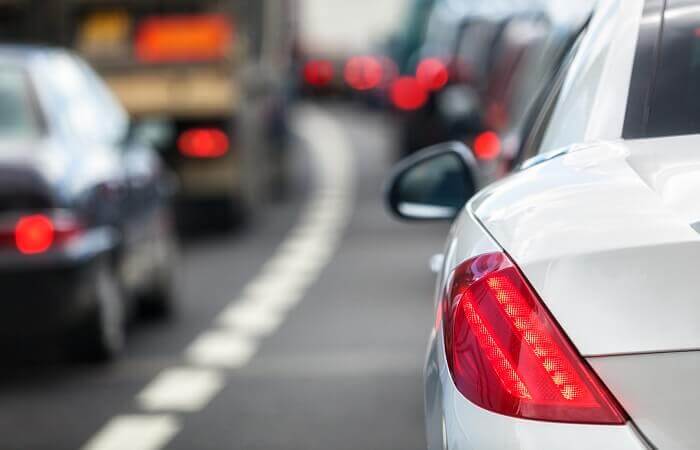Is Your Teen Prepared for Traffic Clumping?
Traveling in a traffic clump increases safety risks.
Traveling in a traffic clump increases safety risks.

In the early 1980’s, I arrived in New York from the UK as a wide-eyed computer programmer – I am proud to mention I became a U.S. citizen in 1998. My first work assignment in the U.S. placed me at GM’s Pontiac Headquarters in Michigan, but my first driving adventures started after picking up a 1972 Chevy Malibu Classic for around $500.
Back then, I was struck by the lack of “roundabouts” or traffic circles present on U.S. roads.
Growing up in the UK, traffic circles were everywhere; I received excellent training on how to navigate them as part of my driver education. Traffic circles are much safer than traditional traffic lights or stop sign intersections and a great place to learn merging skills.
Despite this, the U.S. shows little interest in adopting them and as a result we face many issues with something I call “traffic clumping.”
Traffic clumping
Traffic clumping refers to a group of vehicles moving together on a roadway. When vehicles are grouped together like this, it can make it difficult for other drivers to move through traffic and leave little time to react to hazards. Traffic clumping is especially common on freeways and multilane highways with traffic lights leading onto their acceleration ramps. When the traffic light turns green, a group of vehicles is released and naturally forms a clump as they move onto the ramp and prepare to merge.
You may also be familiar with the small stop and go traffic lights found on some freeway entrance ramps. These lights have been added as a band aid, to space out the clumps of cars released onto the ramp from a traffic light. Rather than use this temporary fix, many countries use traffic circles to provide a more efficient way for vehicles to enter freeways and avoid the clumping problems.
Either way, as these traffic clumps approach the freeway, they inevitably encounter the vehicles already there, many of which seem determined not to let anyone merge in front of them (or perhaps they’re clueless as to how to let other vehicles merge smoothly). If your teen hasn’t had much experience merging on the freeway, it can be a nerve-wracking experience, even without large clumps of vehicles nearby. When you add in the highly likely scenario that many of the surrounding drivers are distracted by their phones, it creates a very dangerous situation.
Merging problems
It takes concentration, planning and driving skills to merge correctly and to maintain a safe space around your vehicle. I work hard at my driving skills every day because I always want to place my vehicle in the safest position possible for me, my passengers and all other road users, but your teen has to consider that not everyone is this focused when behind the wheel.
Practicing your teen’s merging skills before they get issued a driving license is a great idea. A general lack of merging skills, combined with clumps of vehicles released from traffic lights, are key reasons why entrance ramps are often the first places to cause traffic backups.
New teen drivers will inevitably experience these sorts of stressful situations, and while roundabouts could be an excellent solution to some of these problems, they’re not going to just pop up overnight. Instead, your teen needs to be prepared for the realities of driving today and you can help. The more practice and guidance you can give to them as they’re learning to drive, the safer they’ll be.
Tips to stay safe
Here are some awareness points I use around all traffic light intersections. When my light turns green, I scan around and accelerate with traffic when it’s safe to do so. Drivers are very vulnerable when moving in a line of other vehicles through an intersection – we are almost forced into a tailgating situation – so I use 360-degree eye scanning until I am well clear of any intersection.
If I find myself in a clump of vehicles after entering a freeway, I begin to work my vehicle away from other vehicles when it is safe to do so. Once the clump of cars reaches a cruising speed, I carefully work towards having a two to three second clearance between my vehicle and the one in front so that I have time to react to hazards.
Another tip is that I will never set my cruise control to the same speed as the vehicles around me. Instead, I always work myself towards a hole in traffic where my vehicle is as isolated as possible.
Why do I work myself away from traffic clumps? Because traveling in a traffic clump increases safety risks. I always assume every driver around me is not paying attention to the road because these days there is a very good chance that many vehicles are being operated by distracted drivers.
This is not the ideal or safest driving option, but it is the one we are faced with. Talk with your teen about these risks so that they are prepared to stay safe, even if they find themselves in the midst of a traffic clump.
With a century-long legacy, the National Safety Council is a global center for safety expertise. Let's work together to align resources. We look forward to learning about ways we can join efforts to expand safety everywhere!
There are no items in your cart